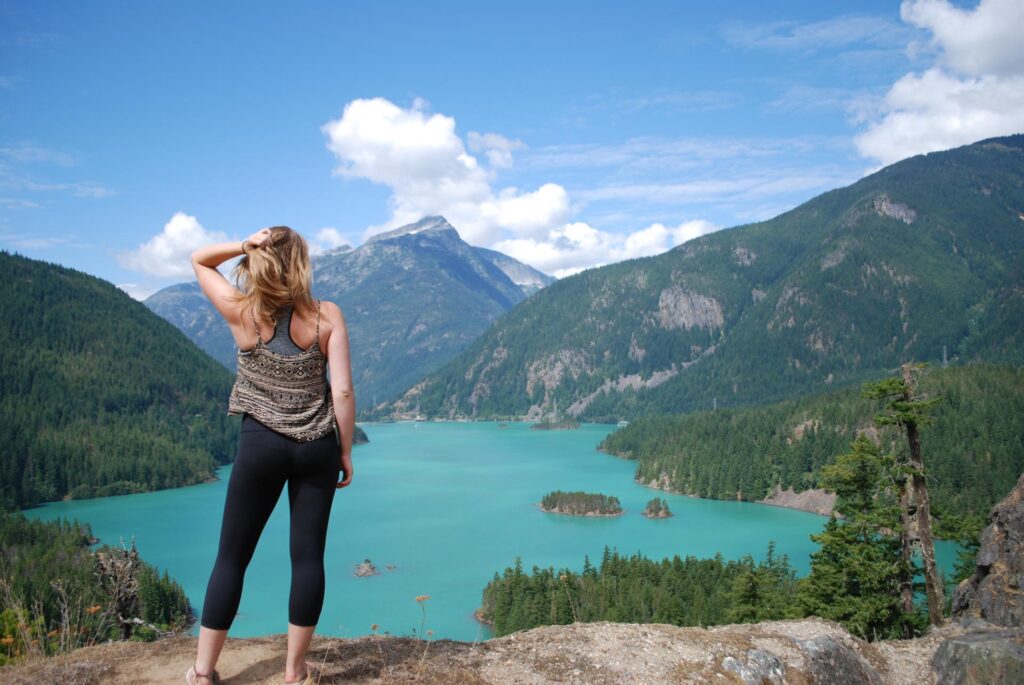As the North Cascades Scenic Byway loops between massive peaks and along lakes colored turquoise by glacial silt, you’ll see why these mountains are called “the American Alps.” Many argue that the North Cascades Highway is the most scenic in Washington State. Of all the passes that traverse the Cascades, this is the most mountainous, with high hairpin turns and jaw-dropping vistas. It’s so rugged, it closes during winter months. And it’s so stunning that travelers line up before sunrise on the day it reopens in the spring to be among the first across. Here you’ll find 1920s-era company towns, organic farms selling their produce and, at journey’s end, one of Washington’s most beautiful outdoor recreation destinations—the Methow Valley. Load up your mountain bike, grab your hiking boots, bring your appetite, and enjoy.
Key points of interest:
- Washington Pass Overlook – Quite possibly one of the most scenic rest areas in Washington – with iconic Liberty Bell Mountain towering over Highway 20 as you approach from east to west. Pull over at the overlook and follow a wheelchair accessible, paved trail to a lookout with incredible views of the mountains above and the valley below. Many hiking trails are in the area, including access to the famous Pacific Crest Trail. This roadway closes every winter for several months between Mazama and Diablo, so be sure to plan your trip accordingly. Mother Nature sets her own schedule on when conditions will mean time to close. The area can receive 700 inches of snow in a season!
- Diablo Lake Overlook – Enjoy views of glacial-fed Diablo Lake, located within the heart of the North Cascades. See rugged mountains that rise around the lake and the historic Diablo Dam in the distance. Learn about water, geology, glaciers, and the plants and animals that call this place home. In summer, the distinctive turquoise color of the lake is the result of suspended fine rock particles refracting sunlight. These rock particles, called glacial flour, enter the lake when rock from the surrounding mountains is eroded by ice and flows into the water through glacial streams. The color is most vibrant on sunny days in July, August, and September when seasonal glacial melt occurs.
